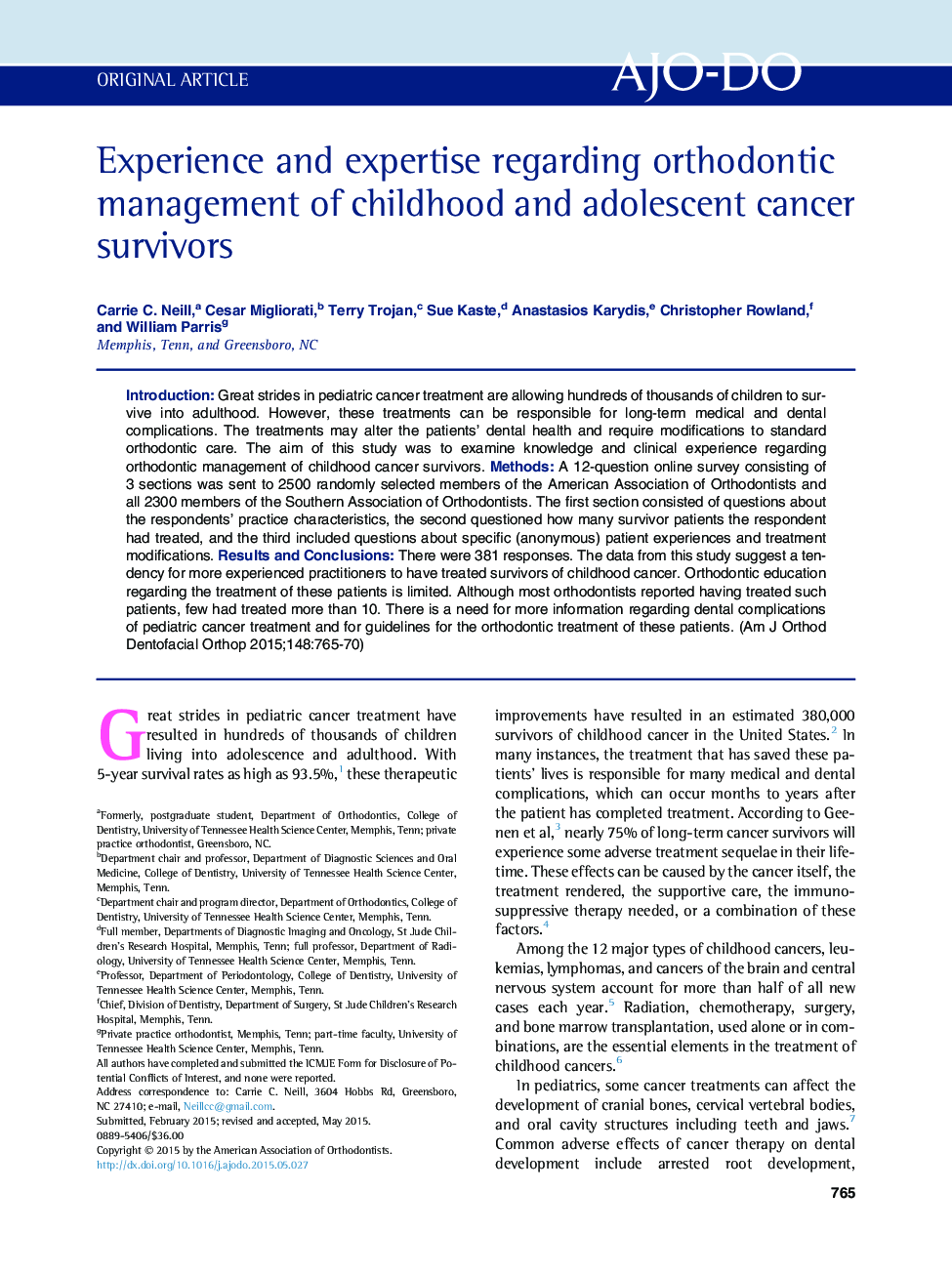| Article ID | Journal | Published Year | Pages | File Type |
|---|---|---|---|---|
| 3115795 | American Journal of Orthodontics and Dentofacial Orthopedics | 2015 | 6 Pages |
•Few practitioners have treated more than 10 pediatric cancer patients.•Most obtain medical information about the patients’ previous cancer treatment.•Orthodontic education about treatment of survivors of pediatric cancer is limited.•More information is needed on dental complications of pediatric cancer treatment.
IntroductionGreat strides in pediatric cancer treatment are allowing hundreds of thousands of children to survive into adulthood. However, these treatments can be responsible for long-term medical and dental complications. The treatments may alter the patients’ dental health and require modifications to standard orthodontic care. The aim of this study was to examine knowledge and clinical experience regarding orthodontic management of childhood cancer survivors.MethodsA 12-question online survey consisting of 3 sections was sent to 2500 randomly selected members of the American Association of Orthodontists and all 2300 members of the Southern Association of Orthodontists. The first section consisted of questions about the respondents’ practice characteristics, the second questioned how many survivor patients the respondent had treated, and the third included questions about specific (anonymous) patient experiences and treatment modifications.Results and ConclusionsThere were 381 responses. The data from this study suggest a tendency for more experienced practitioners to have treated survivors of childhood cancer. Orthodontic education regarding the treatment of these patients is limited. Although most orthodontists reported having treated such patients, few had treated more than 10. There is a need for more information regarding dental complications of pediatric cancer treatment and for guidelines for the orthodontic treatment of these patients.
